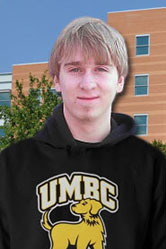Computer Engineering
“Underwater Node Localization Scheme”

Traditional underwater localization relies on line-of-sight (LOS) links to properly utilize ranging information. Unfortunately, the accuracy of the ranging techniques such as time of arrival (TOA), time difference of arrival (TDOA) and angle of arrival (AOA) can be significantly degraded by LOS instabilities in the underwater medium due to increased multipath effects. This project proposes a novel underwater signal reflection-enabled acoustic-based localization scheme (UNREAL) that employs both LOS and surface-reflected non-line-of-sight (NLOS) ranging information to locate a node that has drifted away. The LOS and NLOS links are classified by incorporating a surface-based recovery mechanism, which recovers the channel impulse response information through homomorphic deconvolution. A closed-form least square method is developed to use such classification to locate the node by either using the LOS AOA measurements or the NLOS AOA from the estimated water surface reflection point. Every node in the network can be used as a reference point to locate the lost node when LOS AOAs are available. The AOAs are a collection of elevation and azimuth angles for each reference nodes in the 3D underwater environment. Simulation results are carried out by using a 3D camera to measure the water surface in a controlled tank, the measured water surface was then used in a simulated environment to validate the approach.
How did you find your mentor for your research, scholarship, or artistic project?
Dr. Younis taught my introductory Computer Engineering class where he spoke of his own research. I toured his lab the following semester and quickly began to involve myself in his lab.
How did you know this was the project you wanted to do?
Honestly, I didn’t know this was a project that I wanted to do, yet after speaking with my mentor I felt that this would be a perfect field to begin working in based on the classes I had taken and what I hadn’t taken yet.
Is this your first independent research project?
No, I previously worked on 2 different research projects. The first was at Montana State University during the summer following my sophomore year. This research dealt with radio beam-form transmissions and the automation of radio equipment. My second research project was conducted at NASA Goddard Space Flight Center, where I was working with robotics.
Do you get course credit for this work?
No
How much time do you put into it?
I work roughly 10hrs/week during the school semester, and I worked 40hrs/week over the summer.
How did you hear about the Undergraduate Research Award (URA) program?
I had seen numerous student profiles listing participation with the URA program and I felt that the URA was just what I needed to help fund my research.
What academic background did you have before you applied for the URA?
I applied as a junior, so I had already had all my basic computer engineering classes, as well as most of the electrical engineering classes needed for this type of research.
Was the application difficult to do?
The application was not difficult at all. As long as you have some background within your research area, the application is very straightforward.
How much did your mentor help you with the application?
My mentor answered questions that I wasn’t able to, and also provided me with draft fixes so that my answers were as accurate as possible.
What has been the hardest part about your research?
Starting the code development of the MATLAB test bed. After hearing how complicated the simulation has to be, along with the amount of mathematics involved, I felt somewhat intimidated with what we would have to create. So far the simulation has been going well, and is already providing great results
What was the most unexpected thing?
The most unexpected thing has been the amount of time required to accomplish the tasks at hand. I have spent a lot more time in lab then I had originally thought I would be spending.
How does your research relate to your work in other classes?
My research entails underwater localization, which by itself is something I have never had a class on. The math involved however, along with the circuitry, programming, and paper writing all relates back to classes I have had within the Computer Engineering department.
What is your advice to other students about getting involved in research?
First, make sure you have the time to dedicate to working in a lab. When you are not in the lab collecting data, you will be conducting background research, writing papers and logs, emailing data back and forth, and keeping a constant communication with your mentor(s). Also, make sure the subject you are working within is something that you can see yourself working in further into your future. I have spoken with multiple researchers and companies that I may have opportunities to work with after I attain my degree, and it is all thanks to the research involvement I have now.
What are your career goals?
After I obtain my Bachelor of Science, I would like to attain both an electrical engineering graduate degree and an engineering license. I would like to start my career within the private energy sector as an engineer, where I hope to work with the nationwide energy grid.
Did you transfer to UMBC from another institution? Where?
No, I have been with UMBC since my freshman year.
7/29/2013